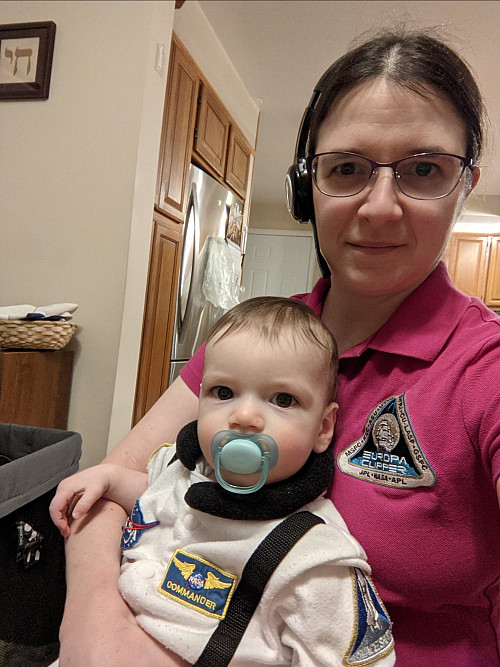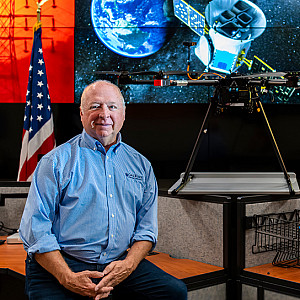From Physics 102 to Space Exploration
Sarah Katz’07 always knew she wanted to work on space exploration. After graduating from Beloit with a major in physics and minors in chemistry and computer science, however, she wasn’t sure whether to pursue graduate school in physics or in engineering. When after a year working in IT she started thinking again about grad school, she realized that applied physics offered the combination of physics and engineering she was looking for.
Today Sarah is a lead radiation engineer on the Europa Clipper mission to Jupiter at the Johns Hopkins Applied Physics Laboratory.
“I’m so excited that we’re going to be sending a mission to another planet and that the Clipper will be sending science data back!”
To get to this point, after leaving the IT field Sarah studied applied physics in the electrical engineering department at the University of Wisconsin Madison. She didn’t neglect her roots in the liberal arts, however. Even as she worked on her master’s degree, she took at least one course outside of the electrical engineering department each semester, whether the course was in solid state physics or psychology.
Participation in the Edison Engineering Development Program at GE Research in New York state followed.
“I took courses taught by experts in fields from metallurgy to x-ray CT machines. I also rotated through different labs working on x-ray tubes, silicon carbide power electronics, positron emission tomography detectors, and gamma ray spectroscopy. I then worked full time in the GE Detector Lab for 3 years.”
But the desire to work on space exploration was still there. Luckily, the spouse of a fellow Beloit alumnus worked at the Johns Hopkins Applied Physics Laboratory and was willing to pass her resume around. Her graduate studies and work in the gamma ray detector lab paid off. Today she is a radiation engineer for two instruments on the Europa Clipper mission, the MISE and PIMS.
How did her Beloit College education prepare for her current role?

“The electronics lab course I took at Beloit is perpetually invaluable for my work. It equipped me to read schematics and talk in the language of electronics engineers. But the same is true for Physics 102. There is no off-the-shelf software package for modeling the degradation of complex systems by radiation, so sometimes you have to go back to first principles. For example, after degradation, will there be enough current to charge a particular capacitor fast enough to avoid interfering with data collection?”
Beyond the concepts she learned at Beloit that are relevant to her current work, Sarah stresses the value of skills she acquired.
“In my line of work, you need to be able to do the hard, crunchy calculus needed to derive formulas. That means you have to be both mathematically comfortable and mathematically fluent. But you also have to be able to write well, so that you can write up plans and document what you have done. I’m glad the Beloit curriculum enabled me to strengthen my writing skills.”
Also invaluable: Beloit College taught Sarah to be to be willing to tackle anything, learn new things, and get up to speed quickly.



